SINGAPORE: The recent surge in public and private sector demand for unmanned aerial vehicles (UAVs) – or drones – provides merely a small glimpse of the market’s largely untapped potential here, according to experts.
Last week, the Ministry of Transport awarded a master contract to render drone services to agencies like the National Environment Agency (NEA) and Urban Redevelopment Authority (URA), which have been toying with the use of UAVs since mid-2015. In October last year, a SingPost drone delivered mail from the mainland to offshore Pulau Ubin; while local dining establishment Timbre announced plans to deploy “waiter drones” at its restaurants.
These examples demonstrate the receptive nature of local companies to exploring the use of drones, and are the result of a big push locally to improve productivity and reduce manpower usage, said Dr Foong Shaohui, an assistant professor at the Singapore University of Technology and Design (SUTD), who deals with UAVs as part of his engineering specialty.
“This has provided a platform for the local drone industry to develop. Singapore is already an aviation hub. Perhaps we also can be a UAV hub as well,” he suggested.
Ms Lim HY, the owner of online store 65Drones, concurred. “With the rise in the demand for drone services, and the need for trained professionals with specialised skills in operating UAVs… Singapore could position itself as a hub in Southeast Asia,” she said.
DRONE USES YOU DIDN’T KNOW OF
Singapore’s interest in drones appears to mirror a global trend, with statistics from venture capital firm Kleiner, Perkins, Caufield and Byers (KPCB) showing the number for consumer drones shipped increasing from around 500,000 in 2013 to over 4 million in 2015, accounting for a net revenue of some US$1.7 billion.
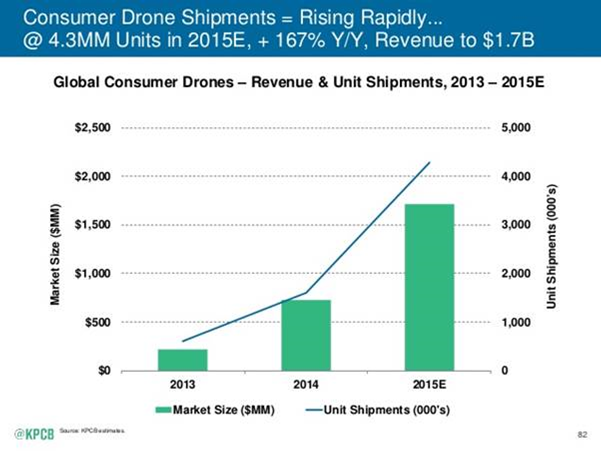
Still, Singapore’s contribution to the industry extends beyond the taking of spectacular photos and videos from up high, said both Dr Foong and Ms Lim.
Over at SUTD, a research project funded by the Ministry of Defence (MINDEF) has developed UAVs inspired by nature – specifically the Angsana tree, whose seeds have wings allowing it to disperse far away, said Dr Foong. Another SUTD project – sponsored by DSO National Laboratories – succeeded in building a UAV able to fly continuously for 50 minutes longer than the 20-minute cap of most commercially available units.
Dr Fong also spoke of UAVs as educational tools in the fields of physics and engineering, as well as recreational applications such as aerial light displays.
Added Ms Lim: “Drone equipment is designed in the US and made in China, but it’s a little-known fact that some components are actually conceptualised, manufactured and skilfully crafted in Singapore too.”
“For instance, every single 65Drones Doinker frame kit is proudly 3D printed and hydro-dipped in Singapore, and sold to overseas customers. Other examples are the iXura frame and ZMX motor – all local brands which have been marketed successfully overseas.”
“If further developed, this will create employment opportunities as a local enterprise,” she added.
DRONES OF THE FUTURE
Despite the buzz over drones, it is worth noting they take up only a small chunk of the high-end consumer electronics market, with Goldman Sachs Research data revealing that 2 million retail drone units shifted in 2015 compared to 11 million for action cameras and at the opposite end of the spectrum, 218 million for tablets.
Forecast remain optimistic, however, with market intelligence firm Tractica predicting consumer shipments to increase to 70 million in 2021 and revenue to hit US$5 billion then.
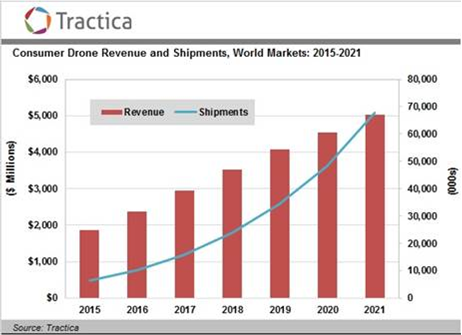
Commercially, consulting firm PricewaterhouseCoopers believes the drone market will spike from US$2 billion this year to as much as US$127 billion by 2020.
“(Drones) have a plethora of other applications, including agricultural automation, land surveying and mapping , disaster assistance and perhaps in the near future, transportation,” explained Dr Foong. He added that Singapore, being “highly dense and built-up”, provided opportunities for test-bedding drone uses.
“If it works in Singapore, it would be able to operate in many locations around the world,” he said.
Ms Lim, meanwhile, raved about the potential of first-person drone racing – where participants pilot the UAVs using video goggles linked to the machines by radio transmission.
Citing a news article describing drone racing as “the sport of the future”, she said: “Drone racing could be developed into a national spectator sport attracting overseas visitors.”
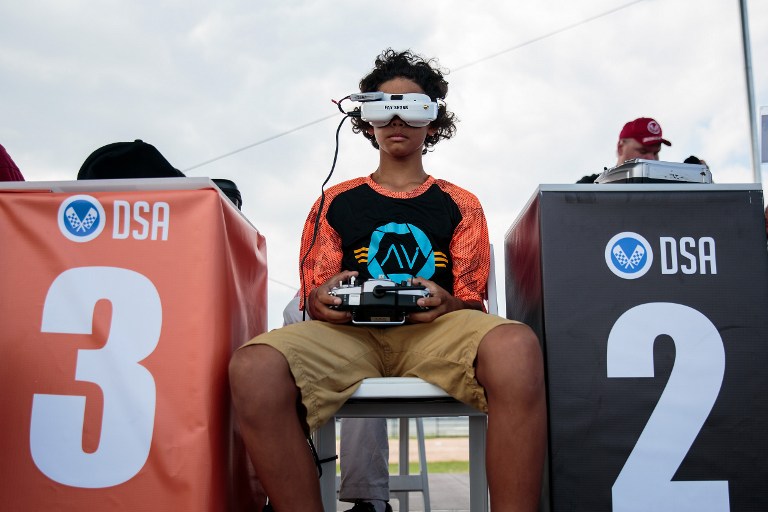
A drone racer flying his drone at the National Drone Racing Championships in August 5, 2016 in New York City (Photo: Drew Angerer/Getty Images/AFP)
Last week, a drone race in nearby Bintan, Indonesia attracted overseas participants and tourism dollars, said Ms Lim. “There is potential to develop something similar to the F1 race… it could create jobs in the hospitality and tourism industry.”
“Drone racing also offers the same thrilling experience as sitting on a roller-coaster,” she added. “It’s the next generation of virtual reality.”
NAVIGATING DRONE LAWS
Flying a drone in Singapore is not a simple case of plug-and-play, though, with the Government passing the Unmanned Aircraft (Public Safety and Security) Bill in May last year. It includes, among other regulations, the requirement of permits to fly drones above 7kg; or within a 5km radius of an aerodrome; or above 200 feet. Additional permits are needed for activities such as dropping items from the UAV.
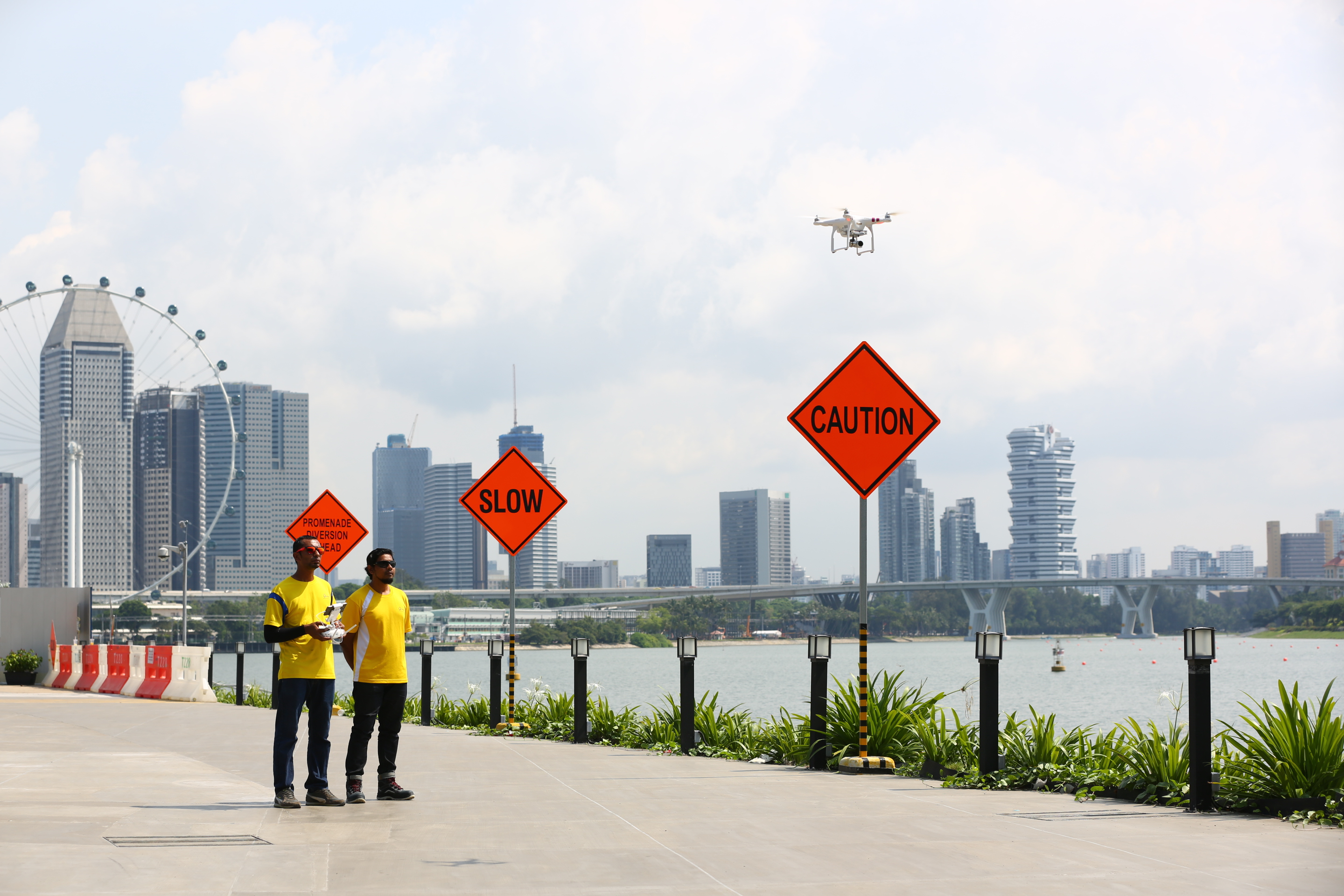
PUB operators testing a drone, which will be used to help manage Singapore’s water resources (Photo: PUB)
Will these stringent rules impede the progress of the industry? Not according to Dr Foong. “The regulations are meant to ensure safety for the operators, the general public and manned air traffic,” he said. “As Singapore is a global aviation hub, it is imperative that the safety of commercial flights are maintained and not having regulations in place to protect it can be catastrophic.”
“Drones, just like any piece of machinery, if used incorrectly can potentially injure others. Hence it is important to have proper safety and operating regulations… I think with continued tweaking, it should not be a big hindrance.”
Ms Lim agreed. “Airspace safety is of utmost importance. Operators should always work within the limits… I personally will not think it will hamper growth as there are many areas that the industry may grow in while adhering to laws and rules. The sky is the limit.”
However CEO of local UAV firm Avetics, Zhang Weiliang, noted that an area to be improved was the requirement of permits when flying in an indoor space. “I feel that if certain safety conditions are met, even commercial applications should be allowed to fly indoors without a permit,” he said.
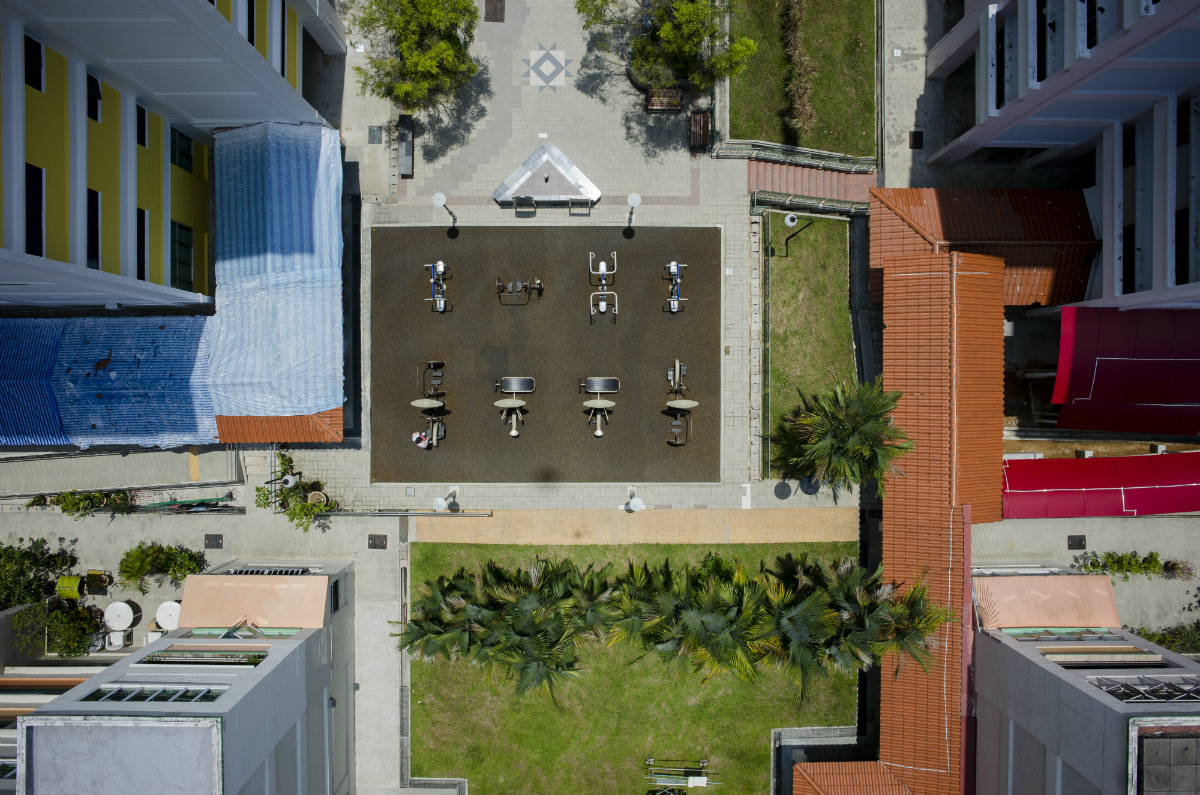
A playground in Singapore through the lens of an aerial drone. (Photo: Avetics & Stefen Chow)
REALISING THE FULL POTENTIAL OF DRONES
Asked to envision the future of drones in Singapore, Mr Zhang said: “The direct impact of drones to lives of Singaporeans will not be obvious. The benefits will be accrued at the organisations’ end, and Singaporeans will either see a lowering of costs of various services or an increased quality of service.”
“One example will be the inspection of buildings for defects. This improves general safety but is often not felt by Singaporeans.”
He added: “A couple of years ago, processing power was limited, hampering the intelligence of the drone. This year the latest drone weighs just 700g with forward sensors; avoid sensors and downward precision altitude sensors.”
“This has made drones safer and will only get better in the next few years. Current drone technologies are riding on the mobile plus autonomous vehicles wave, with many parallel technologies shared, hence the pace of innovation will accelerate as these other industries move forward.”
Dr Foong described the drone domain as advancing rapidly, with an ever-evolving benchmark of “full potential”.
“It’s akin to mobile phones in the 1990s. Growth may be astronomical,” said Ms Lim.
“The scene is an evolving space with new use cases created as technology progresses,” Mr Zhang concluded. “I do not think it will ever reach full potential, just like the IT industry in general.”




